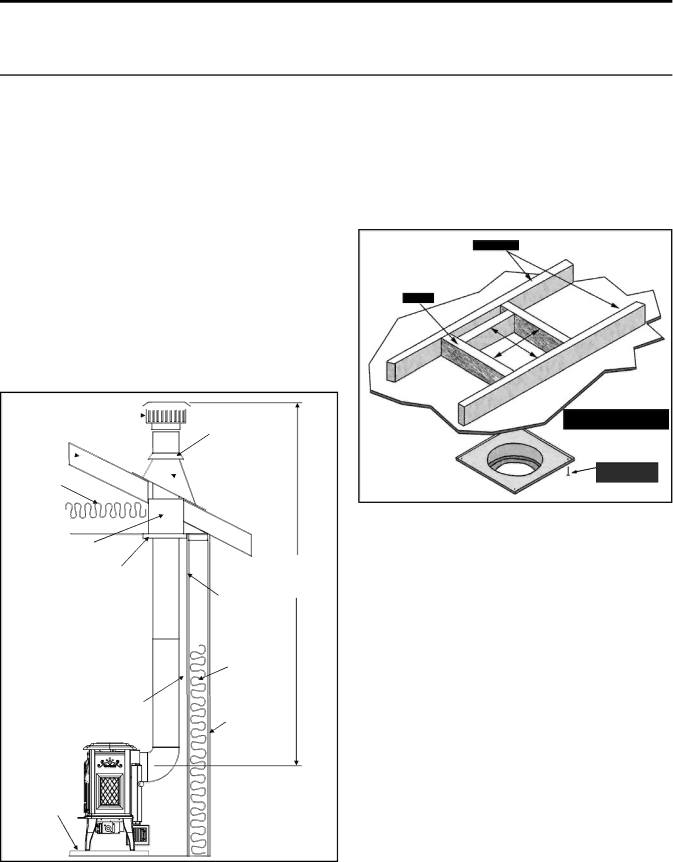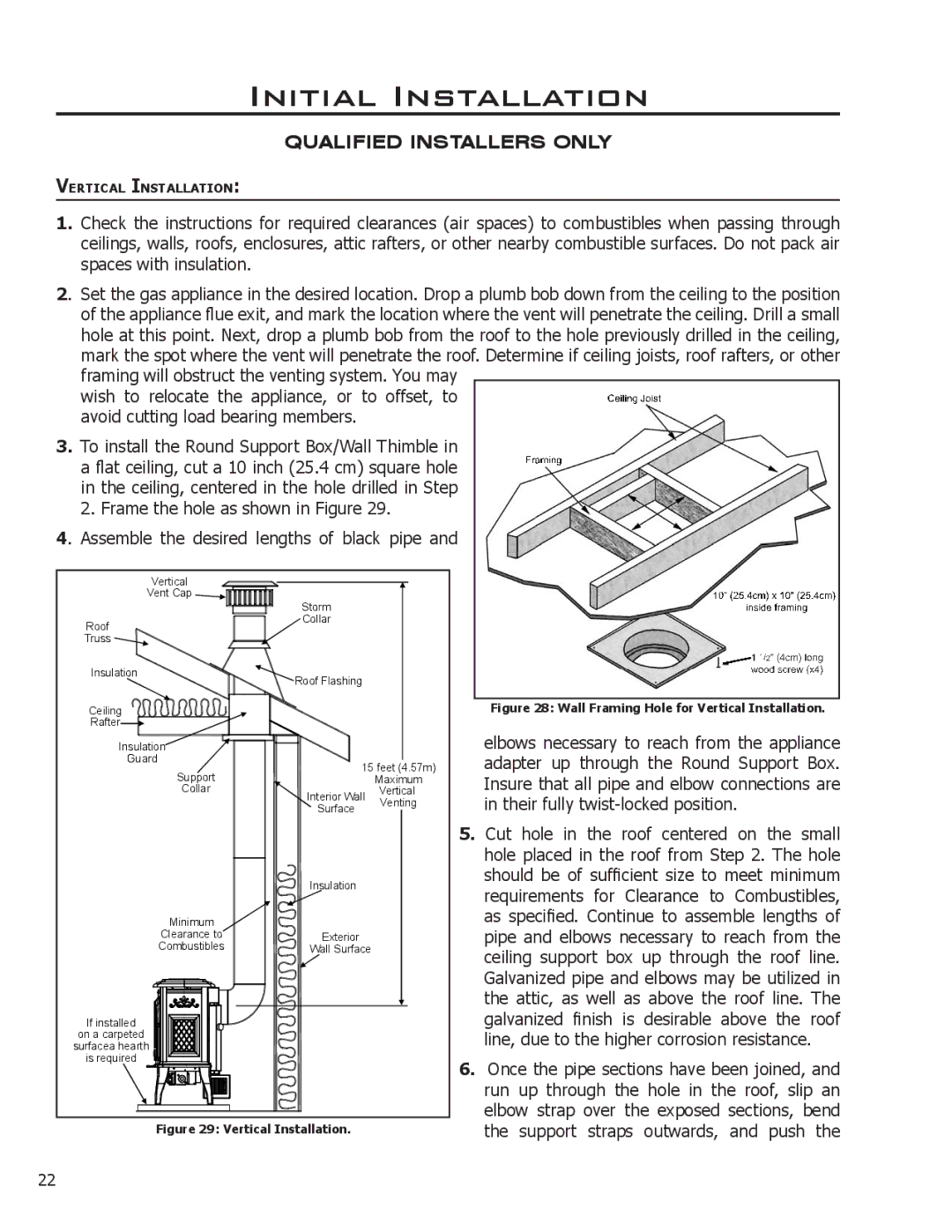
Initial Installation
QUALIFIED INSTALLERS ONLY
VERTICAL INSTALLATION:
1.Check the instructions for required clearances (air spaces) to combustibles when passing through ceilings, walls, roofs, enclosures, attic rafters, or other nearby combustible surfaces. Do not pack air spaces with insulation.
2. Set the gas appliance in the desired location. Drop a plumb bob down from the ceiling to the position of the appliance flue exit, and mark the location where the vent will penetrate the ceiling. Drill a small hole at this point. Next, drop a plumb bob from the roof to the hole previously drilled in the ceiling, mark the spot where the vent will penetrate the roof. Determine if ceiling joists, roof rafters, or other framing will obstruct the venting system. You may
wish to relocate the appliance, or to offset, to avoid cutting load bearing members.
3.To install the Round Support Box/Wall Thimble in a flat ceiling, cut a 10 inch (25.4 cm) square hole in the ceiling, centered in the hole drilled in Step 2. Frame the hole as shown in Figure 29.
4. Assemble the desired lengths of black pipe and
Vertical
Vent Cap ![]()
![]()
Storm
Roof
Collar
Truss ![]()
Insulation
Ceiling
Rafter![]()
![]()
Insulation
Guard
Support
Collar
Minimum
Clearance to
Combustibles
If installed ![]()
![]()
![]()
![]()
![]() on a carpeted surfacea hearth
on a carpeted surfacea hearth ![]()
![]()
is required
![]() Roof Flashing
Roof Flashing
15 feet (4.57m)
Maximum
Interior Wall Vertical
Surface Venting
Insulation
Exterior
Wall Surface
Figure 28: Wall Framing Hole for Vertical Installation.
elbows necessary to reach from the appliance adapter up through the Round Support Box. Insure that all pipe and elbow connections are in their fully
5. Cut hole in the roof centered on the small |
hole placed in the roof from Step 2. The hole |
should be of sufficient size to meet minimum |
requirements for Clearance to Combustibles, |
as specified. Continue to assemble lengths of |
pipe and elbows necessary to reach from the |
ceiling support box up through the roof line. |
Galvanized pipe and elbows may be utilized in |
the attic, as well as above the roof line. The |
galvanized finish is desirable above the roof |
line, due to the higher corrosion resistance. |
6. Once the pipe sections have been joined, and |
run up through the hole in the roof, slip an |
elbow strap over the exposed sections, bend |
Figure 29: Vertical Installation.
the support straps outwards, and push the |
22
